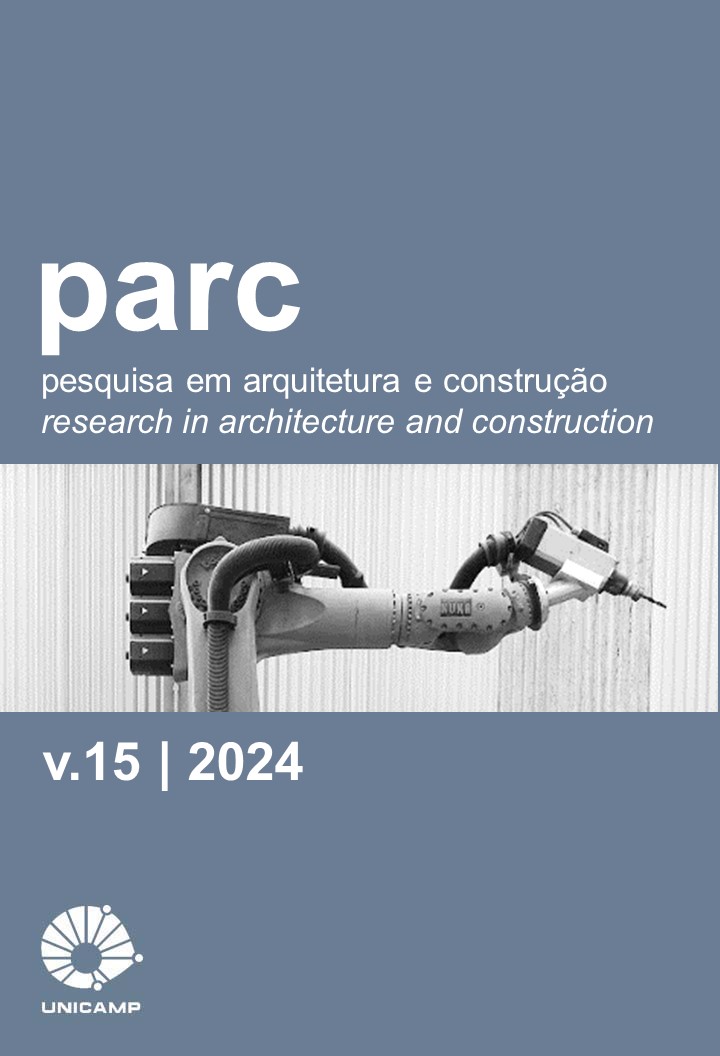Abstract
Technological innovation is a recurring theme in the construction industry. As such, new technologies must be explored in education centers for Architecture, Engineering and Construction (AEC) professionals. Among several technologies with great disruptive potential, additive manufacturing (AM) stands out. In addition, there is a need for more interdisciplinary educational experiences at the undergraduate level, closer to the reality of the labor market. Based on this background and through Design Science Research, the MECA-AM (Collaborative Educational Method for AEC supported by the use of Additive Manufacturing) was developed. It aims to encourage students' interdisciplinary learning in Architecture and Urbanism, Civil Engineering, and Graphic Expression through activities with a PBL (Project-based Learning) approach, prioritizing collaborative learning and using Additive Manufacturing to stimulate integration. In this work, we present two experiences of applying this method, carried out in 2021 and 2022, in 5-week workshops for teaching the subject "Constructive Architectural Details". The student's perception of the course was evaluated objectively and subjectively through a questionnaire, which revealed a high rate of application, showing a high acceptance and positive evaluation. It also highlighted the importance of the participation of Graphic Expression students in AEC multidisciplinary groups was also praised, since their skills in virtual modeling and handling 3D printing equipment contributed to the success of the proposed activities since Architecture and Civil Engineering students usually do not have any exposure to these contents in their current undergraduate courses.
References
CARBONELL, J. Pedagogias do século XXI - bases para a inovação educativa. 3o ed. Porto Alegre: Penso, 2016.
CARBONI, M. H. DE S.; SCHEER, S. Manufatura aditiva como ferramenta didática para a formação de profissionais da AEC. Simpósio Brasileiro De Tecnologia Da Informação E Comunicação Na Construção, 3. Anais... . p.1–14, 2021. Uberlândia: ANTAC. Disponível em: https://eventos.antac.org.br/index.php/sbtic/article/view/567. Acesso em: 3/8/2021.
CARBONI, M. H. S.; SCHEER, S. A manufatura aditiva como suporte à aprendizagem colaborativa e interdisciplinar em AEC: uma experiência integradora com o futuro profissional de expressão gráfica. Gestão & Tecnologia de Projetos, v. 18, n. 1, p. 195–218, ago. 2023. DOI: https://doi.org/10.11606/gtp.v18i1.201918
CARBONI, M. H. S.; SCHEER, S.; ITO, A. L. Y. Proposal of a Collaborative Teaching Method for AEC Supported by Additive Manufacturing Use. In: S. Skatulla; H. Beushausen (ed.). Advances in Information Technology in Civil and Building Engineering: ICCCBE 2022. Lecture Notes in Civil Engineering. Cham: Springer, 2023. v. 358, p. 197–213. DOI: https://doi.org/10.1007/978-3-031-32515-1_14.
CHIU, P. H. P.; LAI, K. W. C.; FAN, T. K. F.; CHENG, S. H. A pedagogical model for introducing 3D printing technology in a freshman level course based on a classic instructional design theory. Proceedings - Frontiers in Education Conference, FIE. Anais... . v. 2014, p.1–6, 2015. IEEE.
CORBACHO, A. M.; MININI, L.; PEREYRA, M.; et al. Interdisciplinary higher education with a focus on academic motivation and teamwork diversity. International Journal of Educational Research Open, v. 2–2, n. June, p. 100062, 2021. Elsevier Ltd. Disponível em: <https://doi.org/10.1016/j.ijedro.2021.100062>. Acesso em: 25/11/2021.
CRONBACH, L. J. Coefficient alpha and the internal structure of test. Psychometrika, v. 16, n. 3, p. 297–334, 1951.
ELMÔR FILHO, G.; SAUER, L. Z.; ALMEIDA, N. N. DE; VILLAS-BOAS, V. Uma nova sala de aula é possível: Aprendizagem ativa na educação em engenharia. 1o ed. Rio de Janeiro: LTC, 2019.
FORD, S.; MINSHALL, T. Invited review article: Where and how 3D printing is used in teaching and education. Additive Manufacturing, v. 25, p. 131–150, 2019. Elsevier. Disponível em: <https://doi.org/10.1016/j.addma.2018.10.028>. Acesso em: 29/3/2020.
GAGNE, R. The Conditions of Learning. 4. ed. New York: Rinehart & Winston, 1985.
GASPAR, I. DE A.; SHIMOYA, A. Avaliação de confiabilidade de uma pesquisa utilizando o coeficiente alfa de cronbach. Simpório de Engenharia de Produção, p. 1–7, 2009. Disponível em: <https://sienpro.catalao.ufg.br/up/1012/o/ISAAC_DE_ABREU_GASPAR_2_-_email.pdf>. Acesso em: 17/7/2022.
GATTO, A.; BASSOLI, E.; DENTI, L.; IULIANO, L.; MINETOLA, P. Multi-disciplinary approach in engineering education: learning with additive manufacturing and reverse engineering. (D. Eujin Pei, Org.)Rapid Prototyping Journal, v. 21, n. 5, p. 598–603, 2015. Disponível em: <https://doi.org/10.1108/RPJ-09-2014-0134>. Acesso em: 3/2/2020.
GRIFFIN, P.; COATES, H.; MCINNIS, C.; JAMES, R. The Development of an Extended Course Experience Questionnaire. Quality in Higher Education, v. 9, n. 3, p. 259–266, 2003.
JONES, B. D. Motivating students to engage in learning: the MUSIC model of academic motivation. International Journal of Teaching and Learning in Higher Education, v. 21, n. 2, p. 272–285, 2009. Disponível em: <https://files.eric.ed.gov/fulltext/EJ899315.pdf>. Acesso em: 27/6/2021.
NÓBREGA, P. G. B. DA; NÓBREGA, S. H. S. DA. Engenheiro civil X arquiteto: conflito no aprendizado das estruturas. Revista de Ensino de Engenharia, v. 39, n. 1, p. 183–191, 2020. Disponível em: <http://revista.educacao.ws/REVISTA/INDEX.PHP/ABENGE/ARTICLE/VIEW/1623>. Acesso em: 27/4/2021.
STERN, A.; ROSENTHAL, Y.; DRESLER, N.; ASHKENAZI, D. Additive manufacturing: An education strategy for engineering students. Additive Manufacturing, v. 27, n. March, p. 503–514, 2019. Elsevier. Disponível em: <https://doi.org/10.1016/j.addma.2019.04.001>. Acesso em: 16/3/2020.
WEBER, P. D. Beyond Bolts : architectural details, construction, meaning, 1991. Boulder, Colorado: University of Colorado. Disponível em: <http://hdl.handle.net/1721.1/70861>. Acesso em: 5/7/2022.
WOODS, M.; ROSENBERG, M. Educational Tools: Thinking Outside the Box. Clin J Am Soc Nephrol, v. 11(3), p. 518–526, 2016. Disponível em: <https://www.ncbi.nlm.nih.gov/pmc/articles/PMC4791817/>. Acesso em: 5/7/2022.
YOKAICHIYA, D. K.; GALEMBECK, E.; BRAGA, D. B.; TORRES, B. B. Aprendizagem Colaborativa no Ensino a Distância - Análise da Distância Transacional. Congresso Internacional de Educação a Distância, 11. Anais... . p.1–11, 2004. Salvador: ABED. Disponível em: <http://www.abed.org.br/congresso2004/por/pdf/041-TC-B2.pdf>. Acesso em: 25/5/2019.

This work is licensed under a Creative Commons Attribution 4.0 International License.
Copyright (c) 2024 PARC Pesquisa em Arquitetura e Construção


